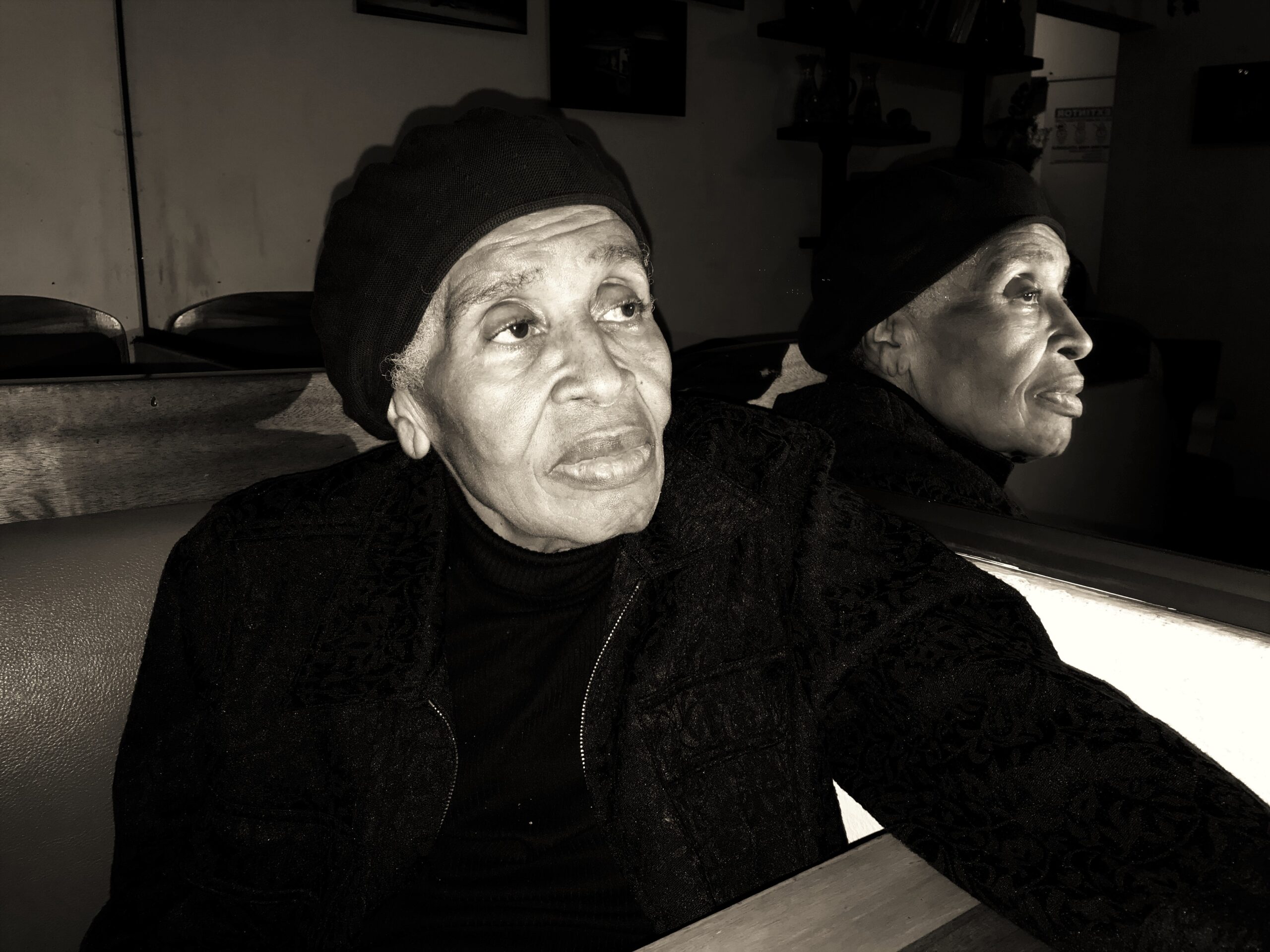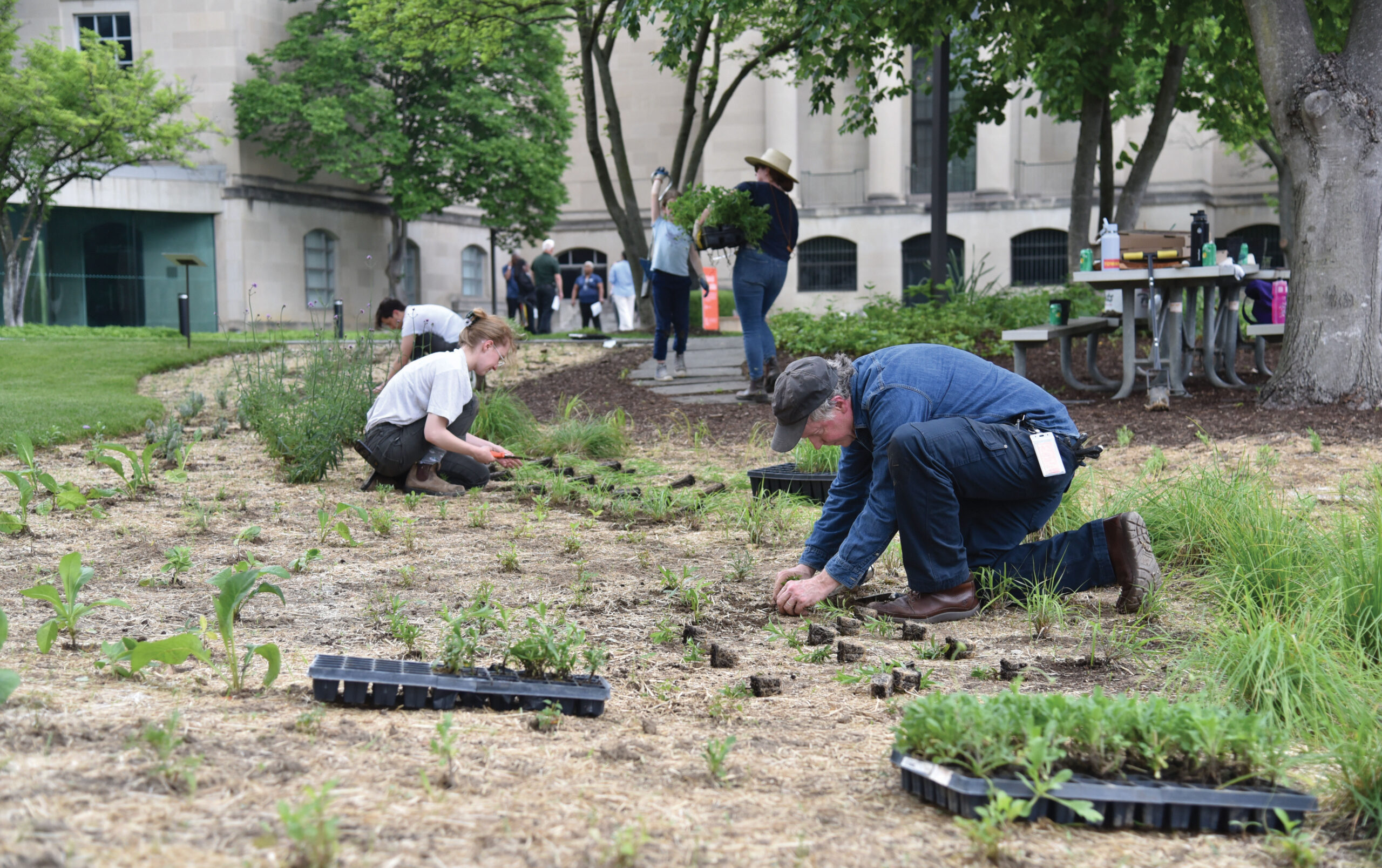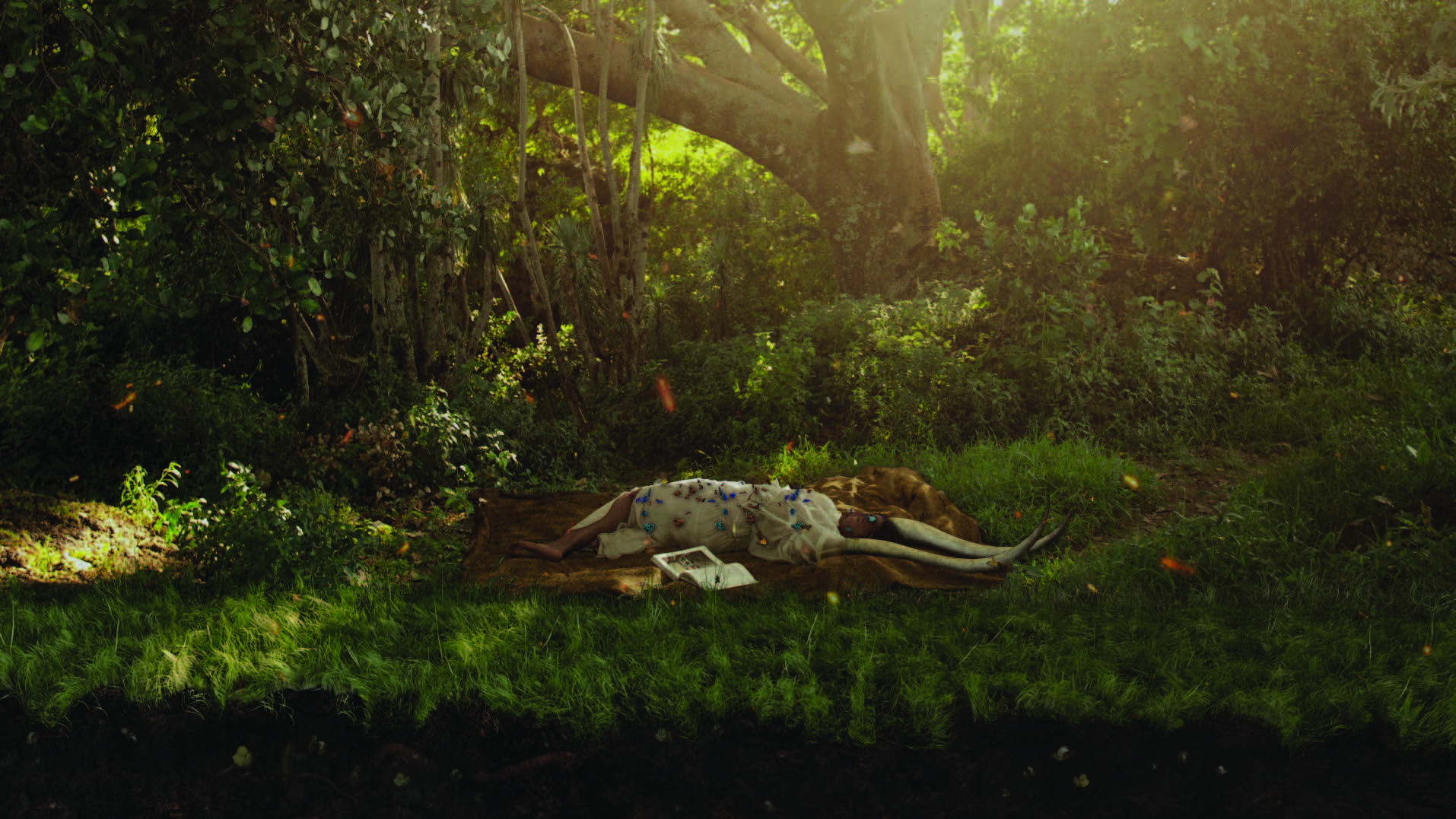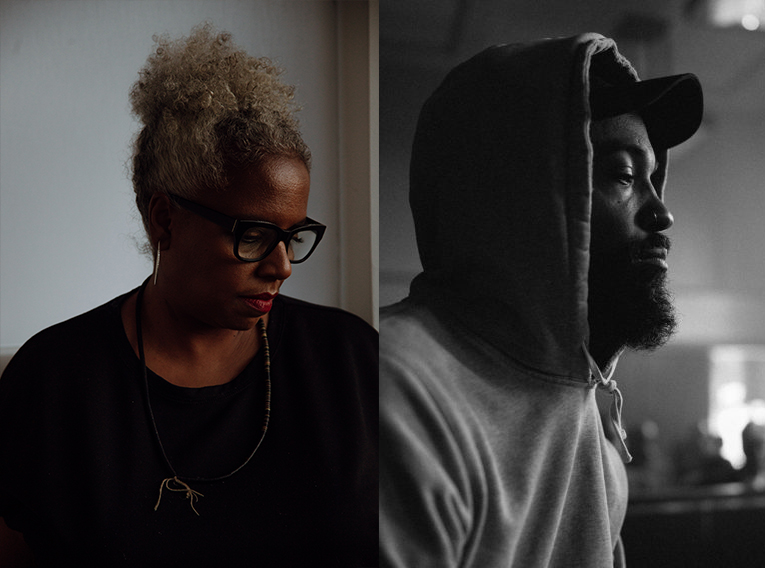
Elissa Blount Moorhead and Bradford Young’s Back and Song considers the labor and care provided by generations of black healers, including their historic contributions to and resistance of Western medicine’s flawed and discriminatory structures. The Baltimore-based artists’ four-channel video installation is on view through January 3, 2021, in the Contemporary Wing of The Baltimore Museum of Art. (Reserve your timed-entry pass here to visit the Museum.)
In February 2020, Blount Moorhead and Young connected with their friend, frequent collaborator, filmmaker, and cinematographer Arthur Jafa to speak in-depth about Back and Song via video chat for the first time together. Part two of a three-part series is below. Part 1 was published on February 28, 2020.
Part 2 of 3
AJ: One thing I wanted to ask you guys: tell me a little about the title. How you guys arrived at the title.
[laughter]
EBM: That’s a different answer every time somebody asks.
BY: Exactly.
AJ: Oh, it’s a different answer?
BY: Yeah.
EBM: I think that’s called, riffing.
BY: Riffing. Riffing. Riffs.
AJ: Well, but what’s the parameters of the riffing? Tell me. I get the riffing part but do the etiology of it.
BY: Yeah it was funny. It literally started with a text, and I was thinking what’s the catalyst and what’s the result? And I was thinking of back just being figuratively and literally. We wear so much on our backs. And I was thinking about how we straighten ourselves out and shake that off. I was thinking about music. Because at one point we really were focused a lot on sound system. Thought it would be more sound system stuff. I thought there would be more. Cecil Taylor basically took the spot for the sound system. Back and Song is very musical, but I thought it would be more musical in the sense of a lot more images. So those words in the title kind of felt rhythmic. I was saying to myself “back and music” or “back and beats” and just felt like “back and song.” But the first time I said it, basically, it was like: the despair and the antidote.
AJ: Hmm.
BY: And then, that’s it. Then Elissa mentioned “of back,” “of song,” “of back, of song,” “of back and song,” or something like that.
EBM: Or like “our back.” Something like “our back, our song.”
BY: It was like “of back or song,” or something and Elissa sent a message back, “back and song.”
AJ: Mm-hmm.
BY: It was like boom, boom.
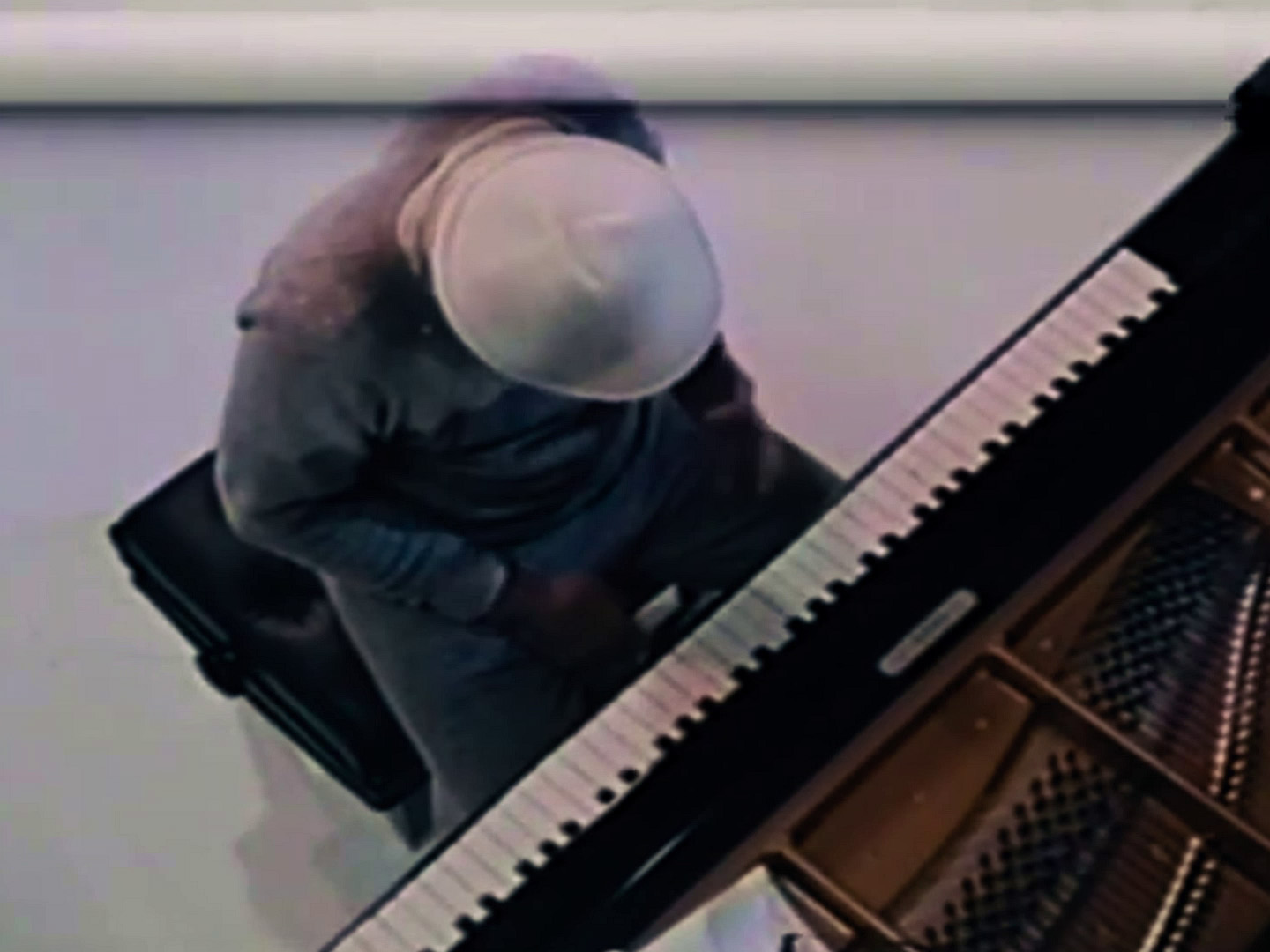
AJ: I mean it’s unusual. It’s an unusual phrase. I was like Back and Song? Because it makes you think of things like back and forth.
EBM: Yeah.
BY: Yeah.
AJ: And I was like…
BY: Call and…
AJ: Okay. Call and response. Exactly.
EBM: Yeah and the more literal ideas behind what’s behind us and then what spurs us, so that it’s like “back” as in, literally, time, whatever temporal back, and then also literally what we carry. And then this idea of our voice and our song and the thing that’s like our musings and what moves us into a future self. Or at least how we imagine our future selves through song or through our voice. Our figurative song. That was the stuff we were riffing on, and then it made sense that those salient words with those two foundational things that Brad was really talking about initially—our back, our song.
Yeah I think that’s the answer.
BY: Yeah that’s it. That’s it.
AJ: That’s the answer y’all are going to go with?
BY: We going with it.
EBM: Sticking to it.
AJ: We were talking a lot yesterday about therapy, and I kept thinking that to me, still, in some ways one of the most, I don’t know if prophetic is the right word, but powerful kind of, not really an articulation, it’s more of a question. In the beginning of Toni Cade Bambara’s The Salt Eaters to paraphrase—she says something to the effect like, “Baby, are you sure you want to be healthy?” She might even say “well.” I can’t remember exactly what it is. I haven’t read it in so long. But it’s just this, really, in some ways I can’t think of an earlier fictional articulation of the question of well-being. And how there’s a component of intentionality. It’s not just a matter of biology and your body’s… the whole idea of the demands well-being places on you. We always think of well-being as simply—you function at a certain level—but it places certain demands on you as well.
Some of which have everything to do with wealth inequality in the Black community. It creates certain problematics, exacerbates certain things, but health inequality also exacerbates certain things so to choose to be healthy on a certain level, to me, is also choosing to be in some ways out of step with the community at large. The very community that one actually identifies with and is committed to in certain respects. So, I wondered about that to a certain degree in terms of the project, and how it makes itself available to an audience. When I was thinking about it afterwards, and I was wondering if you guys, I guess that was a long, complicated way to say: what kinds of discussions or thinking did you guys have around its reception?
EBM: Oh. You know that usual conversation, AJ, which is the: Why are you compelled to do this? and How are you resonating versus how are you an emanation? That’s something that we kept saying for a lot of people after the fact. I don’t think we were thinking about it that much during, but afterwards because we were presenting it through a group that wasn’t us. We were having to, for the first time, translate. Whereas everything prior to that was telepathic for the most part. Even with the folks we were working with in England, or Stefani [Saintonge], very telepathically. With Esperanza [Spalding], we didn’t even have to say anything. And so on, right?
So that was the first time we had to be legible, and I just kept saying to the white folks receiving it that were asking certain questions about “what does this mean to talk about this?”—and they weren’t really asking those questions. They were saying things like, “I’m not sure people will get this.” And I kept saying well, it’s not legible for you; that doesn’t matter to me. But I realized in saying that, if it wasn’t legible to certain other people—so for example, a Black woman that works for a paper in Philadelphia that doesn’t write about arts and esoteric stuff. She just writes about our well-being, right? Our lives. If she was stumped and it didn’t resonate, then I did think about, oh then we might fail.
Or when we’re photographing the 16 [16-mm film] stuff with different people that we were calling healers and if they didn’t have a particular kind of experience in being photographed and then being re-presented, then maybe it was… That was the first time we even talked, Brad, right? Or thought about what would be failure versus what would feel like we made it, like we did something.
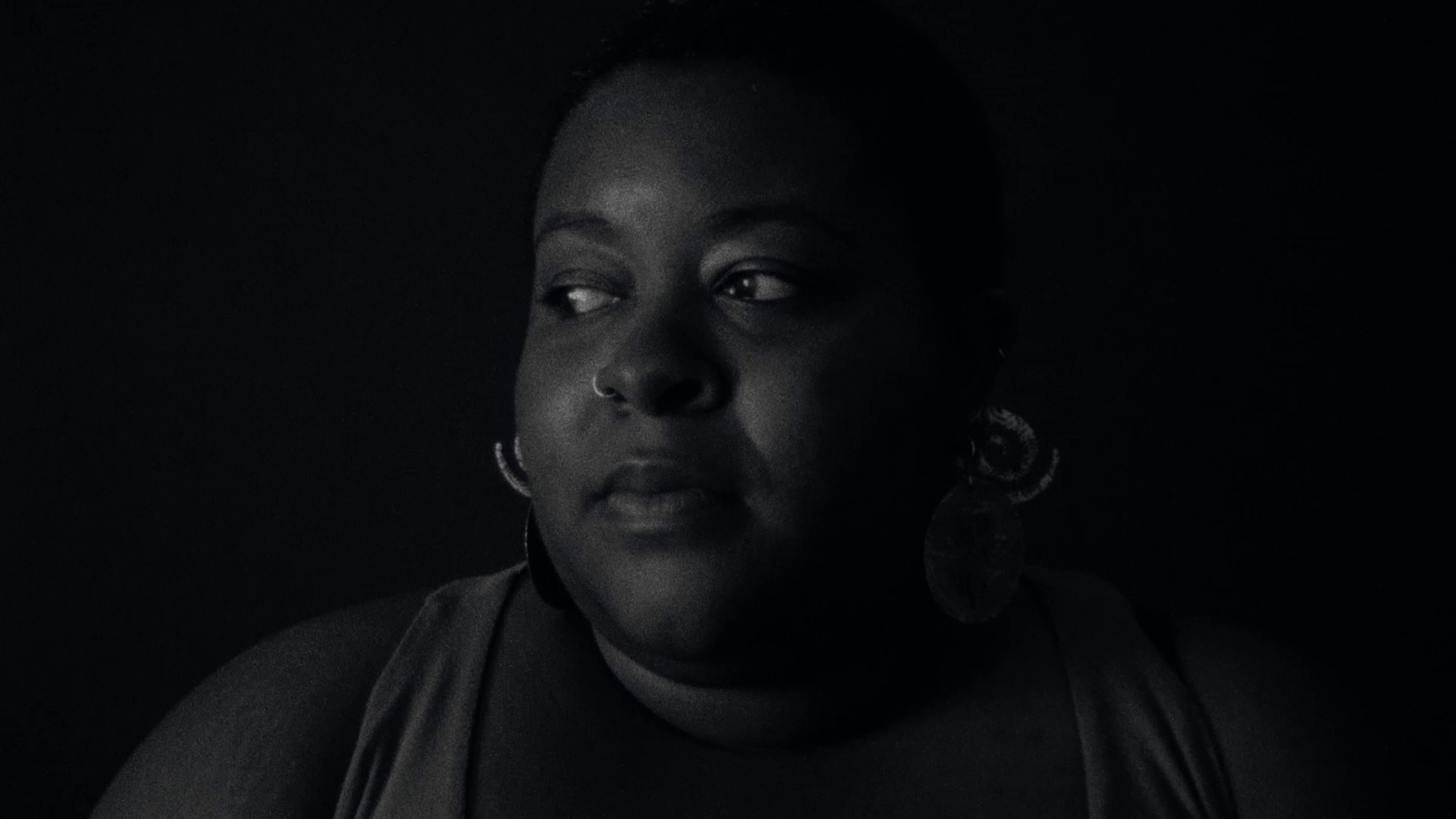
BY: Right. Right. And I think the other part of it too, something we touched on yesterday, is the fact that we made it is a giant step.
EBM: Yeah.
AJ: How so?
BY: Just because it’s a blessing. It’s a blessing, man. It’s a blessing that we cognizant of the fact that we have alternatives. It’s a blessing that we have the intelligence and the history and the knowledge of the history to be very cautious about the way traditional Western medical institutions deal with us. The fact that we can see beyond the veil. We can see beyond the seeming safety net of the white coat. We trust that that’s a scary scenario for us. That’s a terrifying scenario for us. So I just say, it’s also a blessing because, like I said, we’re healthy enough to be able to manifest it and have the time, to do it.
EBM: And also that close/far thing, where, I guess it’s not any different from what Fred [Moten] talks about, right? Being in the hold. We are in the hold. We live in Baltimore. For real, for real. And every time we were together, it was here. And that is evidence of what that can produce. Being close, in that griot mode where you have a bird’s eye view, but you’re completely in it. And I’m thinking even the stuff where Brad took the camera and was shooting just right outside his front door. Those kinds of images of trees and leaves that are, I think, conveying one thing but they actually were here in an urban city where Black people are confronting a particular medical oppressor. And have been since eugenics started on their backs, right? So that close-up thing, and the privilege to be close, and the privilege to have distance, to convey well-being, is a trip.
I had those pitch presentations and there was a brother who pitched this amazing project about lead checks. You know about lead checks? Where because they poisoned the city so badly in the ‘70s and ‘80s there are huge settlements, and you get a check that is sort of like the dole from lead paint. There’s tons and tons of people, Black people, that get these lead checks. Sometimes they’re just payments, pretty significant, but they’re the rest of your life because it cripples you mentally. And so it’s like the way people receive public assistance. Like Freddie Gray received a big lead check before they killed him. And then there’s also people who got massive settlements.
And this guy who was doing this film was describing in a really beautifully succinct articulation about why the lead checks exist, how people are still living in the same place, but that how it fostered this quote-unquote “well-being,” because some people were getting $200,000 checks or whatever. But then because they’re still situated in that space, people were being kidnapped and it created chaos. But then at the end of the day, it didn’t create any actual health-related healing. And the final part of it, again, that people can’t realize their dreams because lead keeps you from being able to learn and think and function.
AJ: Right.
EBM: And then in the end, he reveals that he [the filmmaker] actually received a $250,000 lead check and the film is really following how there are no wrap-around services, there’s nothing after you get it. Except you throw a lead check into the place where everybody has lead poisoning. So it was interesting because that’s the stuff that Brad and I were first thinking about especially if you’re reading the stuff we were reading leading up to it and then being in the place where it was happening was surreal. This is where they did all the experimentation and still do. And all the extractions. So, it bugged me out thinking about this play between well-being, being well, and then being the person who has to be well enough to talk about well-being.
BY: Right.
EBM: It was really bugged out. It was.
AJ: One of the things I noticed in the film was like a kind of…I mean Baltimore is a city. But I noticed quite a bit of things that had a very rural feel. And I wonder if there was any thought given to…I wondered—now we’re on some of the iconography and stuff—decidedly sort of rural or folk feel in some of the footage versus the urban thing, and I wonder if there was any thought or consideration or any thoughts about that split.
EBM: Well, it’s interesting.
AJ: You know what I mean?
EBM: Yeah.
BY: Yeah.
AJ: Archival footage in particular has a very rural thing. It’s funny. I think of midwifery and, in its inception, it feels very rural. Because it’s like Black people in these isolated, southern contexts where the whole idea of a…
EBM: Country midwife.
AJ: Yeah exactly. When we talk about a doctor who makes a home visit. Well, yeah that was given versus more of an urban thing where you think of people coming more to the doctor. I’m saying doctor in the sense of health practitioner.
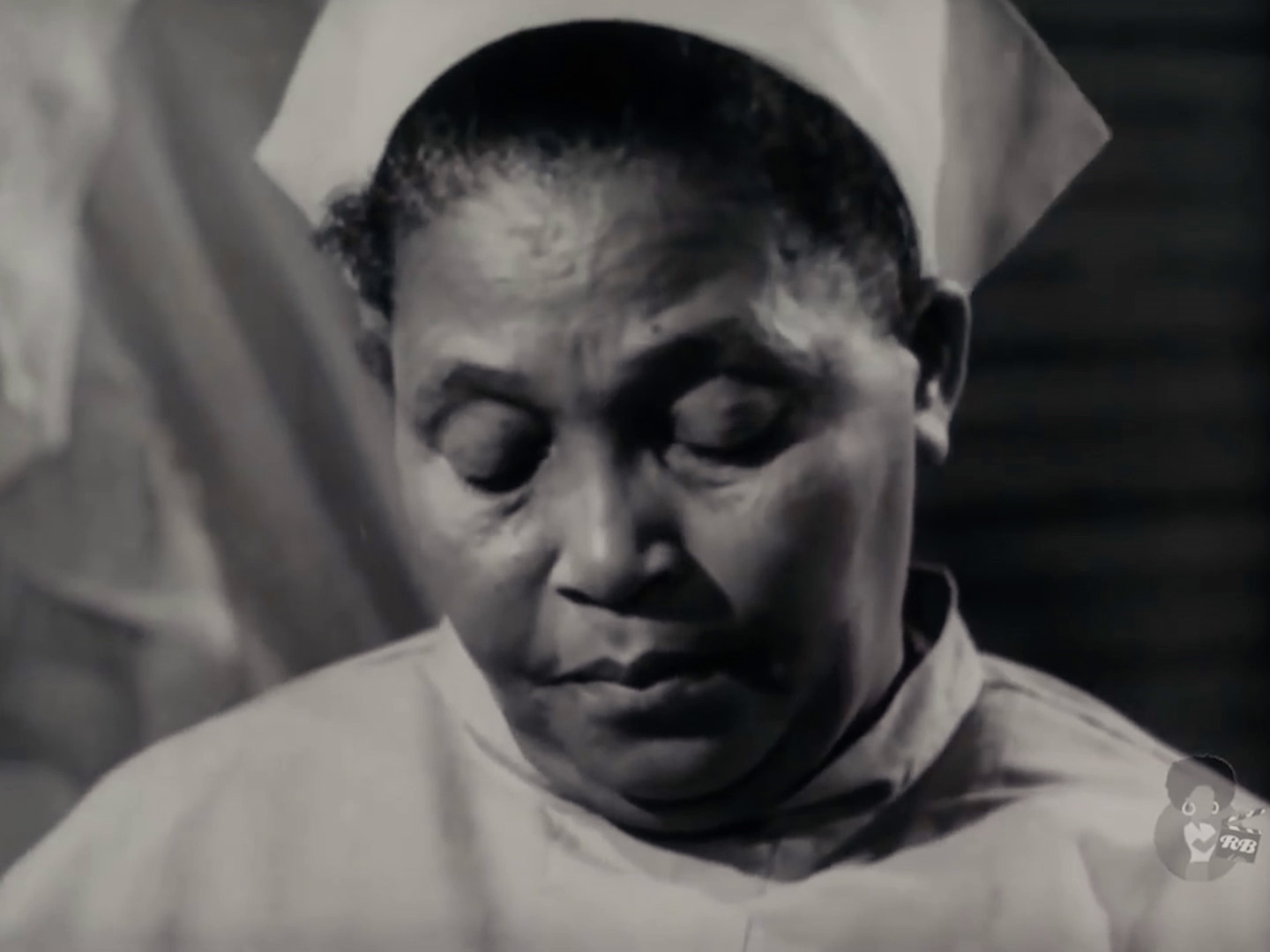
EBM: The system. Yeah. It’s interesting now how all those things are adapted as hipster, wealthy access. And when you think about midwifery, I had midwives in New York City, that was a very privileged exclusive thing. But predicated on midwifes from our tradition.
AJ: But all of that. But all of that. Because even when you think about gardening, like you said, it’s got a hip association now. But everybody I knew growing up, my grandfather, my granddad, everybody had a garden.
EBM: Right.
AJ: It wasn’t no hip thing at all. If anything, it was the opposite. People had a slightly negative connotation.
EBM: Yeah.
BY: Right.
AJ: You got to grow your own food?
BY: Right. Right.
EBM: Especially in urban places where everybody was fleeing any association with working the land, right?
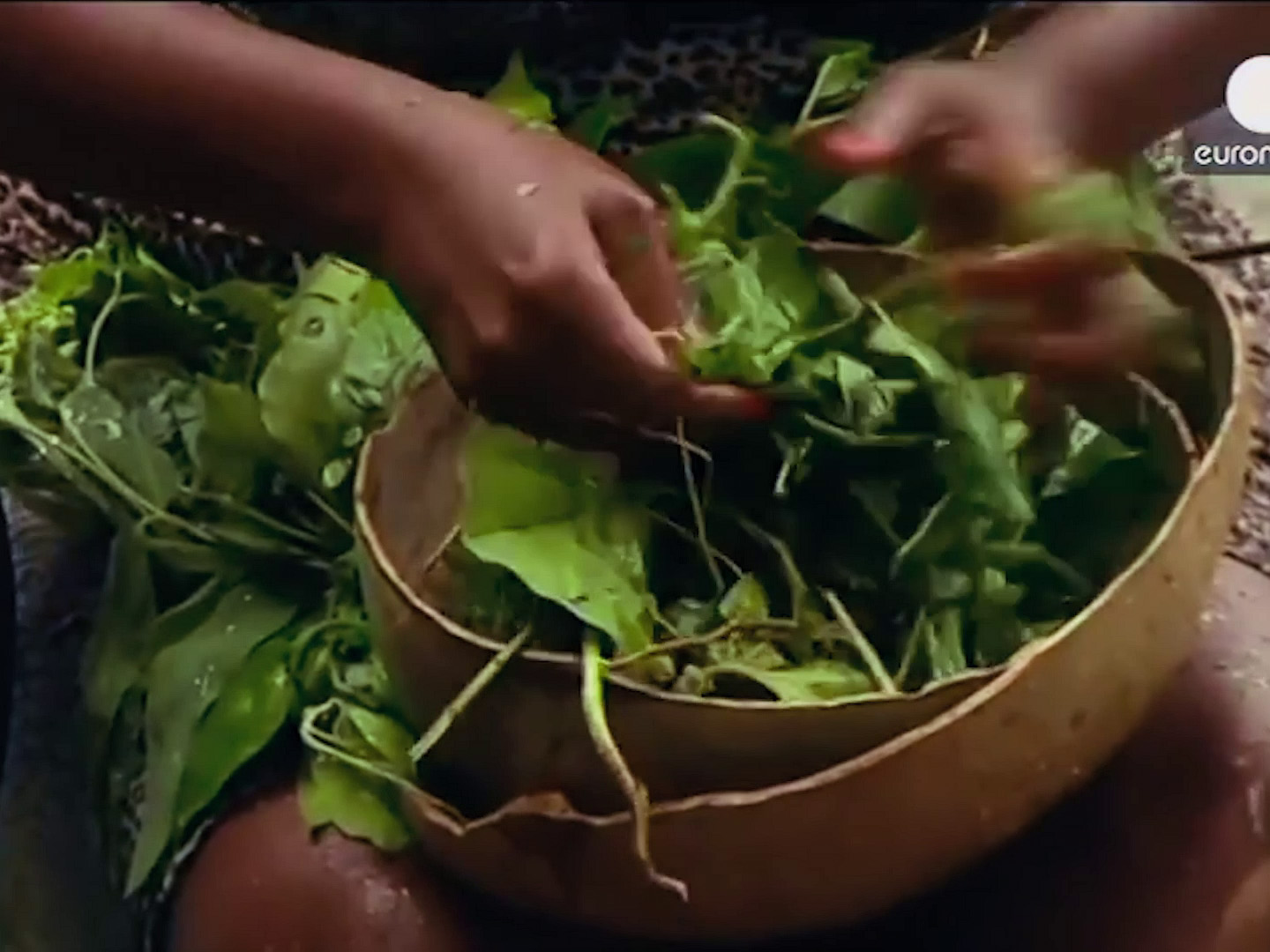
AJ: Yeah exactly.
EBM: And, of course, we forget these traditions like midwifery and breastfeeding and growing, and then next thing you know, they’re selling our…playing our drums back to us, and you got to pay a million dollars for a midwife now.
AJ: Yep. Yep.
EBM: Brad, you captured so much with the water and the…I wonder if that was something in your DNA that was coming out.
BY: Yeah.
EBM: I have zero rural DNA.
BY: Yeah, I think without it seeming so on the nose, I think it goes back to what you already alluded to which is there’s a sense of harmony, there’s a sense of justice when you think about the relationship between humans and nature.
There’s a real healing quality about putting people back in rhythmic order by standing next to water. There’s a frequency there. And I think we look at just in terms of where most of these medicines, whether it be traditional medicines or whether it be conventional western medicines, the basis of all of it is plants.

AJ: Yeah.
BY: And most of that on a mass scale, the industrialized version of it, which we know now with the whole opioid epidemic, the problem with it is that most of those herbs are now industrialized. That’s what’s causing the issue. And that stuff is an industry. An industry happens usually in urban landscapes or the intellect, the conscious or the consciousness around a city of intellectual prowess around developing those medicines come from university settings like Johns Hopkins or Jefferson University.
And I do think there is a real healing quality, like Steph [Stephanie Etienne, Young’s wife]. You know Steph’s whole thing about midwifery is a good balance between the back-to-the-land thing that never really was not hip for us but also, too, understanding how important that perspective is, there’s a sense of relativity too. So you go to the cities, you educate, you feel like you’re elevating the stakes. You position yourself in a certain way. But then you go to the city, you demystify those things and ultimately you end up back on the land anyway. So I think there’s a certain healing thing that we all have whether it be directly or epigenetically. When we see things like water or trees, that brings a certain harmony to our body, to us.
EBM: Around the beginning of that time too, Brad, was that New York Times article [Nathaniel Rich, Losing Earth] based on the report ten years, where all the earth is destroyed. And the urgency around that for many people, but also for me even though five generations ago, my family is in New York, I have no recent memory anyway. And I still feel more relaxed in those traditions that I know are more ancient. And this is up south. This is Baltimore. It’s a Northeast city and has some kind of retention that’s really palpable, right? So, I think some of these things are guiding us without us knowing it.
And when that report came out, I had been talking to a friend [Opeyemi], who is really into this idea of ley lines, which are these energy forces under the earth that guide indigenous people and dictate wellness. How far or close you are to those ley lines that belong to your family roots and all that sort of stuff. And it’s interesting to me because there’s one that runs from New York through to Baltimore in the places that I’ve lived here, and it ends up right here in the park where Brad and I live, in Druid Hill Park. And then while we were talking, I found out that my great great grandparents, who lived in Queens and Brooklyn spent years of their life right on this line on the same block and didn’t know each other yet. And so there is something about an unconscious delivery because, remember Brad, the first time you approached me about this we were talking about tools.
BY: Right. Yeah.
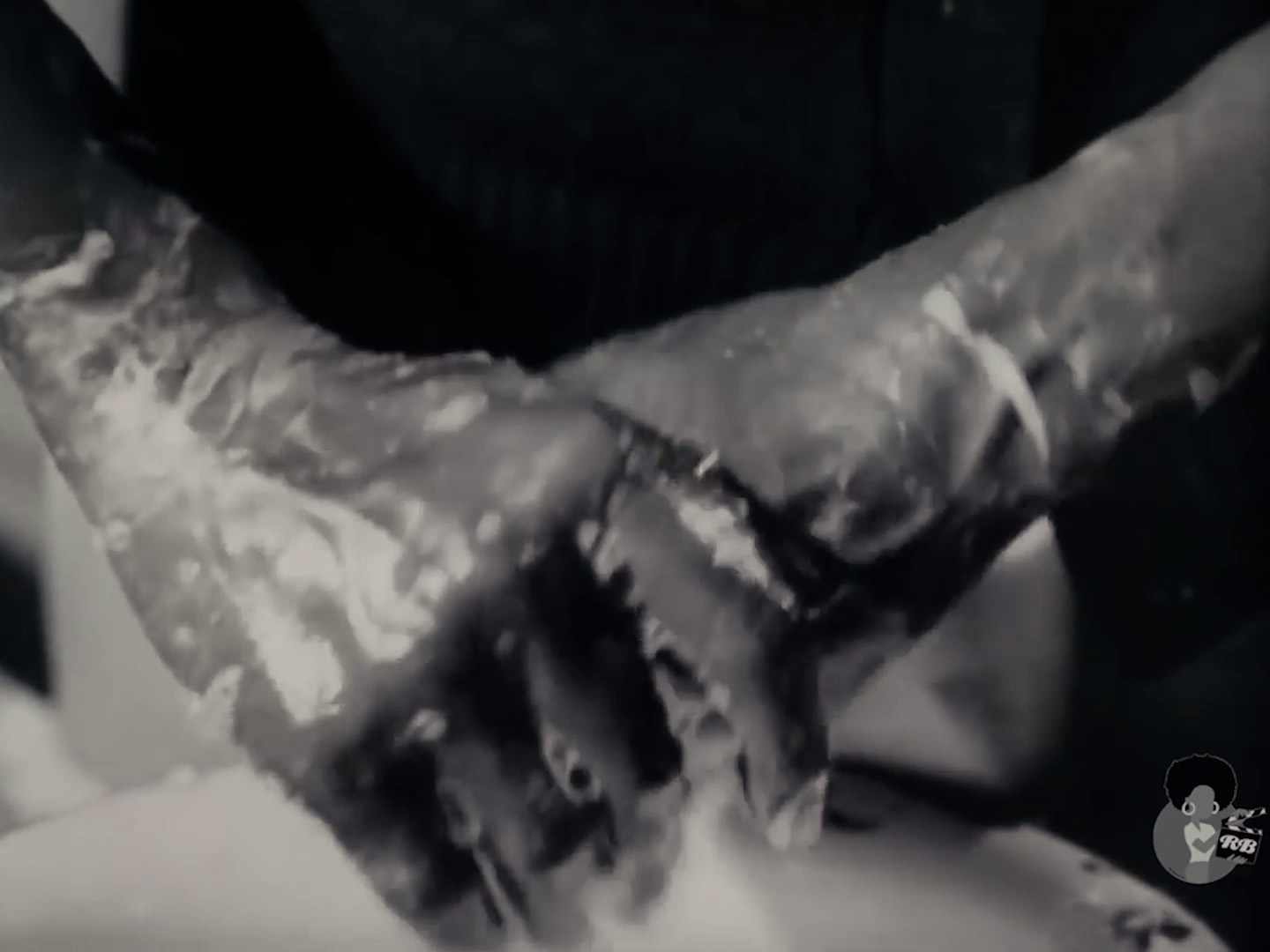
EBM: This is what they call an “eds and meds” town where medicine has definitely been a specific kind of terrorism for Black people. The learning and practicing everything about gynecology and extraction on Black people here until now. And so we were talking about what do those tools looks like? And we immediately went to that as a first interrogation. And I think it’s interesting that we just kept moving away from that. All the tools started going away, and we started moving more towards organic substances, including humans. And then we were doing the work along this line here too. There’s something there that’s not obvious to us but, for sure, I think it did inform our thoughts.
Elissa Blount Moorhead and Bradford Young: Back and Song is on view through January 3, 2021, at the BMA, as a part of the Museum’s 2020 Vision initiative.


